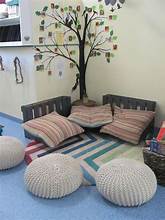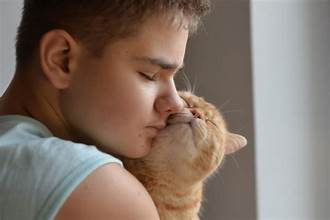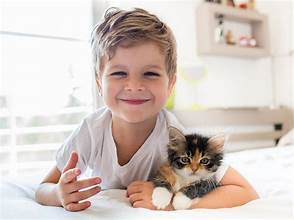Tips for Designing a Safe and Calming Space Where Both Can Retreat, Connect, and Grow Together
For families raising a child with special needs, a sensory-friendly environment isn’t just a luxury—it’s essential. When you also share your home with a dog, creating a space that accommodates both beings’ unique sensory needs is not only possible but can lead to mutual comfort, bonding, and a deep sense of security.
Here’s a comprehensive guide on how to create a peaceful home where your child and your dog can thrive together in harmony, providing you with the necessary tools and insights to achieve this goal.
1. Start with a Calming Color Palette
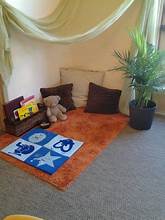
Visual overstimulation can be overwhelming for many children with sensory sensitivities, nd for dogs too.
- For instance, you can use colors like sky blue, sage green, or beige. Avoid bright, bold patterns or sharply contrasting décor in sensory zones, as these can be visually overwhelming for both your child and your dog.
- Avoid bright, bold patterns or sharply contrasting décor in sensory zones.
2. Designate a Shared Quiet Zone
Create a sensory-safe retreat where both your child and dog can go to decompress.

- Use calming lighting such as dimmable lamps or salt lamps. These types of lighting can help create a soothing atmosphere, reducing stress for both your child and your dog.
- Add soft furnishings like bean bags, cozy mats, or calming dog beds.
to create a relaxing atmosphere - Include a tent, nook, or sensory pod for privacy and regulation.
Tip: Ensure the child and pet have access to this area, but also provide separate spaces if they need alone time.
3. Incorporate Soothing Sounds
Both children and dogs can benefit from a peaceful auditory environment.

- Use white noise machines, soft instrumental music, or nature sounds to block out stressful background noise.
- Avoid loud TVs, vacuuming, or appliances near sensory spaces.
Pro Tip: Play calming music during transitions or high-stress times, ike after school or when guests visit.
4. Use Tactile-Friendly Materials
Children with sensory sensitivities often crave (or avoid) certain textures, and dogs are no different.

- Offer sensory-friendly blankets, rugs, and toys that are soft or have varying textures.
to provide a calming environment - ChSelectashable, non-slip rugs that provide a safe, comfortable feel underfoot for both kids and pets.
- Avoid synthetic or scratchy materials that may irritate sensitive skin or paws.
5. Establish a Routine Together
Structure is comforting for both children and animals.

- Build in daily bonding times, such as brushing the dog, feeding together, or going on gentle walks.
- Use visual schedules to help your child predict pet care tasks and interactions.
- Reward calm, gentle behavior around the dog with praise or sensory-friendly treats.
6. Minimize Smells and Harsh Chemicals
Strong scents can be overwhelming to both your child’s and your dog’s sensitive noses.
- Use unscented or natural cleaning products.
- Store dog food, treats, and waste out of direct smell range if your child is sensitive.
- Keep grooming products mild and fragrance-free.
7. Create Mutual Enrichment Opportunities
Bonding through play and learning builds trust and emotional connection.
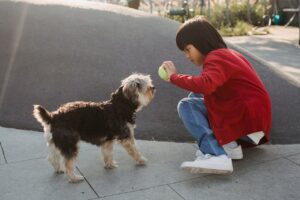
- Choose interactive toys that encourage gentle play, like treat puzzles or soft toss toys.
- Use gentle training games to help your child learn commands and communication.
- Integrate animal-assisted therapy techniques, like stroking the dog during quiet time.
8. Respect Boundaries for Both
Just as your child may need downtime, so does your dog.
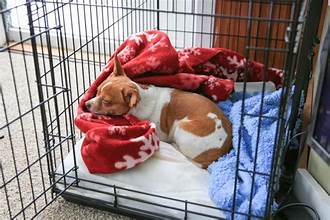
- Provide a “dog-only” space where your pup can retreat, such as a crate or under a table.
- Teach your child to recognize when the dog needs space (tail tucked, yawning, walking away).
- Use visual reminders or social stories to help your child understand pet boundaries. And establish clear expectations.
9. Use Safety as a Foundation
Make the environment physically safe for both your dog and child.

- Use baby gates or indoor pens to separate spaces if needed.
- Keep chewable hazards, cords, or small toys out of reach.
- Supervise all interactions until trust and understanding are well-established.
10. Celebrate Connection and Growth
Watch for minor signs of mutual comfort—your child reaching to pet the dog, your pup lying nearby during story time. These moments build emotional resilience and trust.
Keep a journal or photo album to document milestones, from learning to brush the dog to walking side-by-side. These shared moments can become powerful, joyful memories, fostering a sense of connection and growth in your home.
Final Thoughts
Creating a sensory-friendly home for your dog with special needs about building a shared sanctuary—one filled with calm, compassion, and connection. With thoughtful design and daily intentionality, your home can become a haven where both you and your loved ones can grow in confidence and love.

